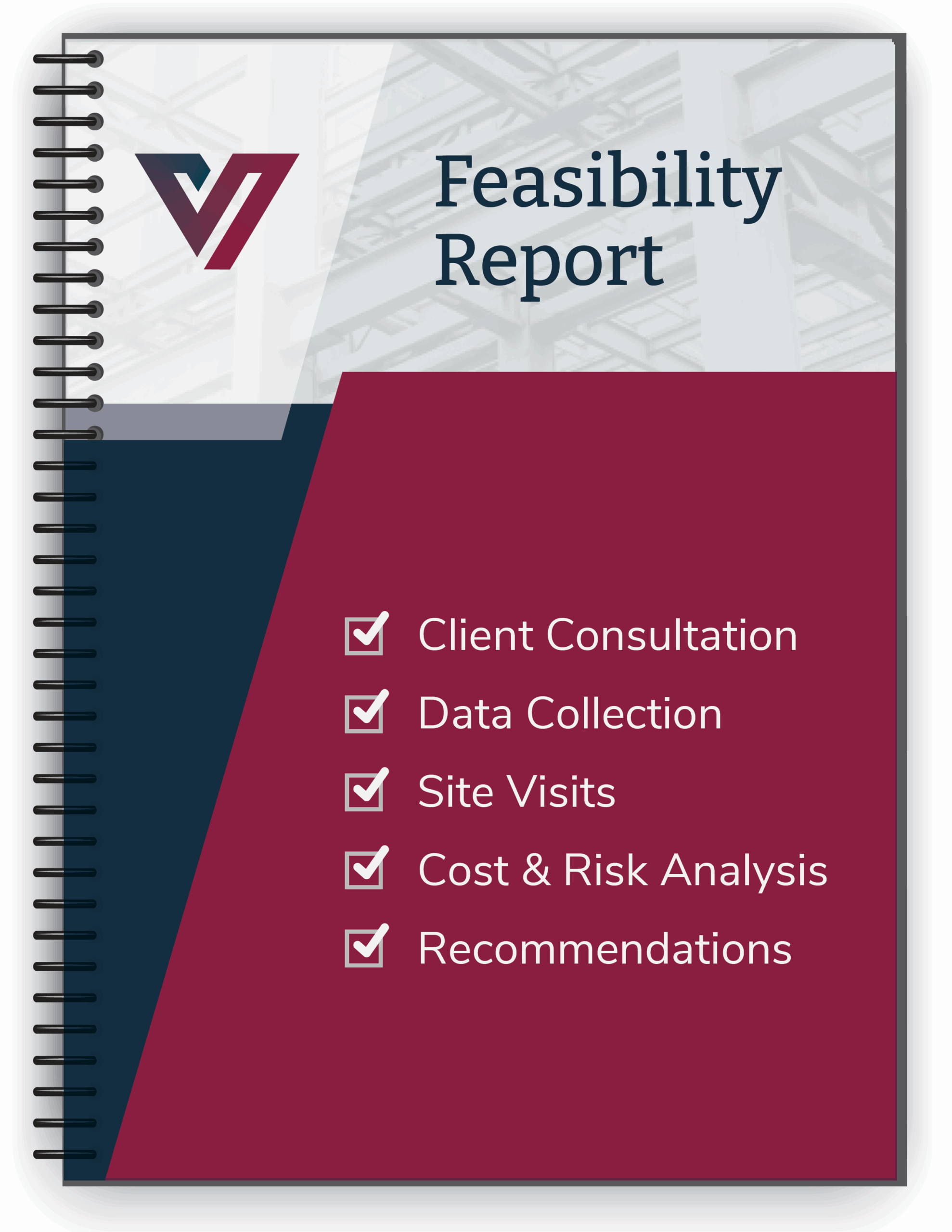What is a Construction Feasibility Study?
Before breaking ground, a construction feasibility study asks the critical question: Can this project be built here, on time, and as designed? The goal of such a study is to prevent a project’s failure by anticipating problems, identifying hurdles, and making sure that the finished building meets the needs of its end users.
While we talk about the feasibility study as a single, cohesive effort, it is really an accumulation of research, reports, and exploratory tests that are performed by your preconstruction team in partnership with project stakeholders and a network of engineers, architects, trade partners, and other experts. The study may not be compiled in a single report or completed at the same time. This is where having construction partners who can summarize the details of these reports in ways that inform your decision making is a huge benefit.
But how do you get started? And what should you include in your feasibility analysis to make sure that you’re not missing key considerations?
Keep reading! At the end of this guide, you should have a solid foundation that you can use to evaluate your project.
The Feasibility Study Process
1. Initial Client Consultation & Objectives
During the preconstruction phase you should meet with your design-builder, general contractor, or construction manager and review your project’s objectives and critical success factors as well as the design features wanted, disposition of the building site, and proposed timeline. To get an accurate idea of the feasibility of your project it is critical to facilitate clear, open, and timely communication with every member of the team.

2. Data Collection & Stakeholder Engagement
This part of the process involves gathering as much relevant information as possible from public and private sources and aligning with key stakeholders (e.g., owners, developers, local officials, utility providers).
- Zoning and land use data
- Utility maps and infrastructure reports
- Traffic studies and access reports
- Historical property uses (to uncover potential environmental issues)
- Local labor and material market condition
3. Site Visits & Environmental Scans
Getting your construction team on location to review the site gives you a hands-on understanding of things such as:
- Soil and groundwater conditions
- Demolition/renovation options for existing structures
- Environmental risks such as brownfields and protected wetland areas.
- Potential construction complications
- And a lot more!
4. Preliminary Cost & Risk Analysis
Using the information that has been gathered, your construction team begins to model potential costs & budgets, what the project phases and schedule might look like, and the risks that need to be addressed.
5. Deliverable: Feasibility Study Report with Recommendations
The findings of your feasibility study will most likely come to you and your construction partner(s) in the form of several reports. By integrating these reports into a tool for decision-making, capital raising, and coordinating with architects, engineers, and contractors during preconstruction you can be sure that you have all your bases covered when it comes to your project’s feasibility.
Feasibility Studies Using the TELOS Model

The key components of a feasibility study can be summarized using the 5-part TELOS model. Read on for a summary of the questions that will be answered by each step.
- Technical Feasibility
- Economic (Financial) Feasibility
- Legal Feasibility
- Operational Feasibility
- Schedule Feasibility
Technical Feasibility
Key Question: Can the desired building design be constructed on this specific site with the available resources?
This part of the feasibility analysis looks at things like:
- Site conditions (soil quality, topography, utilities, access)
- Availability of construction materials
- Required technology, equipment, and labor
- Design complexities
- Environmental and structural challenges
Economic (Financial) Feasibility
Key Question: Can the project be completed within budget constraints and will it be profitable?
Each project needs to be evaluated in terms of its budget, effect on cash flow, and ultimate return on investment. Whether it is a new store location, a warehouse, or a multi-family apartment building, a pro-forma should be run to project the following financial factors:
- Budget Estimate for the Project
- Potential Revenue & Breakeven Point
- Funding Sources & Financing Options
- Return on Investment
- Cashflow Projections
- Repayment Period
Legal Feasibility
Key Question: Are there any legal restrictions or regulations that could delay or prevent the project?
Your project needs to not only be buildable and affordable, but also must comply with local, state, and federal regulations as well as zoning and permitting guidelines. Not getting the proper permits and inspections or missing important parts of building regulations can cause major problems down the road. You should investigate all the following in your feasibility study:
- State & Federal Regulations
- Easements
- Zoning Laws
- Building Codes
- Usage Regulations
- Permits & Authorizations Needed from Regulatory Bodies
- Required Community Comment Periods
Operational Feasibility
Key Question: Will the building be functional, maintainable, and sustainable for its intended purpose?
A big part of your ROI calculation is the long-term maintenance, management, and revenue generation of a project. Looking into the short, medium, and long-term future of a project is important for determining:
- What is the annual maintenance cost of the building?
- What is the estimated overhead or operating cost of this building?
- What is the availability of skilled labor and personnel to manage and run this facility once built?
- What will be the impact on the surrounding infrastructure such as roads and utilities?
Schedule Feasibility
Key Question: Can the project be completed within a reasonable and required timeframe?
Schedule Feasibility takes into account multiple factors that can affect the construction timeline.
- Preconstruction & Design Delays
- Labor Allocation & Shortages
- Material Procurement
- Permits
- Alignment With Stakeholder Expectations & Deadlines
- Contingency Plans for Unforeseen Delays
Start Smart to Build Smart
A thorough feasibility study conducted by your project team moves your project from a theoretical concept to a grounded, data-backed plan. It takes the guesswork out and helps everyone—from owners to contractors—start the project on the same page, with a solid understanding of what’s ahead.
Interested in talking with someone about how a feasibility study fits in with the preconstruction phase of your project?
Veneklasen Construction has helped hundreds of West Michigan and national clients mitigate risk in their builds with early planning—reach out and see how we can help yours.

